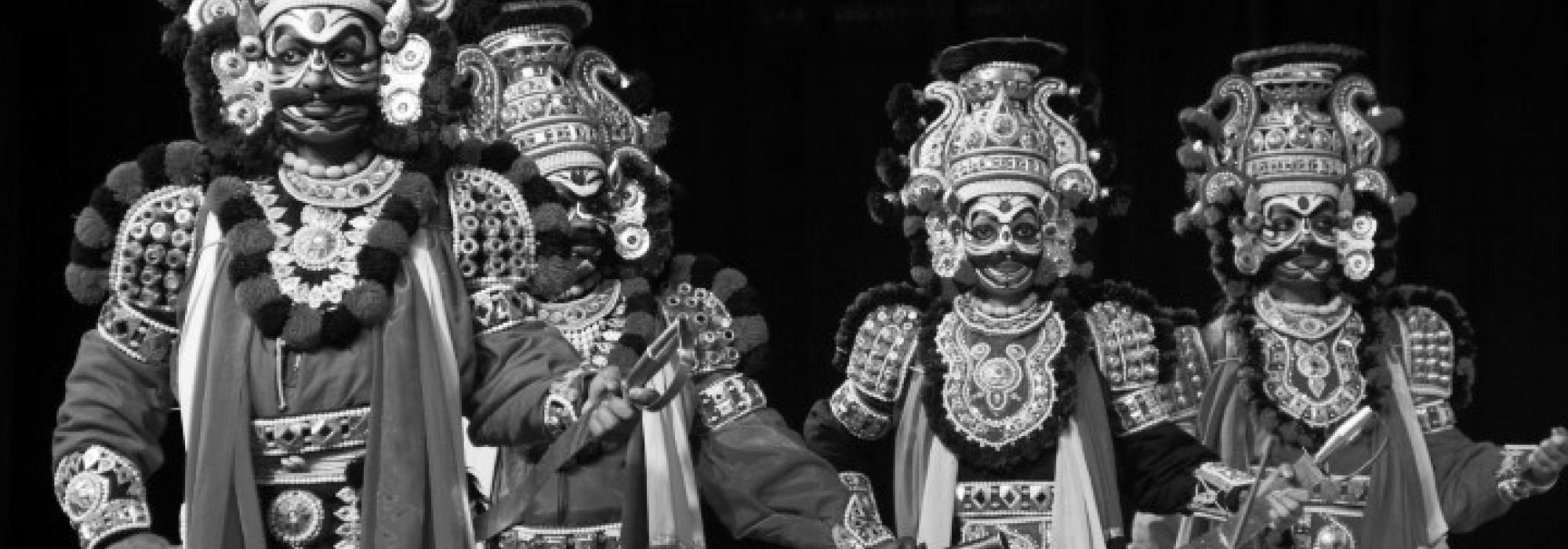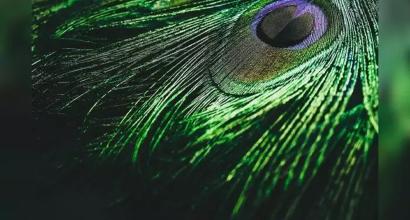The terms ‘mārga’ and ‘deśī’ which have been in use for thousands of years in our tradition are today translated as ‘Classical’ and ‘Folk’ respectively, terms which hardly capture the original sense of the Sanskrit words. This equivalence was drawn by some western scholars and it is hard to say when exactly these were thought to be equivalents of the original Sanskrit words. The downfall and corruption of traditional knowledge systems of India has taken place because we have been taught to look at ourselves through the lens given by the West. In addition to this, connotations that did not exist before have been assigned to the terms ‘Classical’ and ‘Folk’. ‘Classical’ is now defined as mārga, which is ‘brahminical’ and ‘vedic’; ‘Folk’ is thought to be deśī, which is ‘non-vedic’ and is a property of the śūdra varṇa (roughly put, the ‘Dalits’ of today). With this, every facet of our culture is misrepresented and misinterpreted. This kind of explanation that is connected to the varṇas and the Vedas were never a part of our ancient Indian tradition with respect to the terms mārga and deśī. They are not associated even with Āstika or Nāstika points of view. Rituals and traditions of worship which include worship of the Divine mother (Devī), Gaṇapati, Śiva and several others are said to be ‘extraneous’ to Sanātana-dharma by ‘modern researchers’. However, all these practises are obviously Vedic and Āstika. Everyone accepts the Pūrva-mīmāmsaka as Vedic (Vaidika), but in their core philosophy, they are Nāstika. Today’s ‘progressive’ minds have categorised everything that was Brāhma or Kṣātra as dominating and that people who belonged to these classes subdued the subordinates. They also say that the Vaidika paramparā (Vedic culture), which is an off-shoot of the brahmanical thought is oppressive, but have a soft corner for the Buddhist and Jaina philosophies which are off-shoots of Kṣatriya lineages. Additionally several ‘scholars’ say that the Vedānta of the Upaniṣad was the thought process of the Kṣatriyas and they had the upper-hand over the Brāhmaṇas in the field. They quote the example of Pravāhaṇa jaivalī, Aśvapati Kekaya, Ajātaśatṛ and say that they were the vedāntic preceptors for brāhmaṇas such as Uddālaka, Śvetaketu, Prācīnaśāla, Satyayajña, Indradyumna, Jana, Buḍila, Bālāki and several others. They quote these from the Chāndogyopaniṣad. Even with this, what is astonishing is that they do not acknowledge that Vedānta is valuable to humanity and is aimed at the well-being of both the individual and the society. All these stand as examples for the hypocrisy and pervert intentions of today’s ‘intellectuals’. It is fashionable today to categorize the traditions of siddhas, Nāthas, Datta and Avadhūta as revolutionaries against the Vedic system. The intellectuals have conveniently forgotten the roots of these in the advaitic and Vedāntic system. Vedānta declares that caste, creed, family lineage, gender, varṇa and āśrama play no role in the realisation of the absolute. This has also been attested in the words of Vāmadeva, Ambhraṇī, Satyakāma, Raikva, Maitreyī, Mahīdāsa, Aitareya and others in the Vedas. It has been further confirmed in the characters of Vidura, Dharmavyādha and others in the epics and also in the lives of Śaṅkarācārya, Vidyāraṇya, Madhusūdana-sarasvatī, Vivekānanda and Ramaṇa-Maharṣi. When such is the reality, it is only due to their pervert minds that the ‘intellectuals’ claim that every aspect of our society, culture and arts have been ruined by our ancients.
[It is to be noted that the claim that all Vedāntic thought is from the Kṣatriyas and the ritual aspects are from the Brāhmaṇas is nothing but yet another form of perversion and chauvinism. What is even more blatant is that today’s pervert minds claim that the knowledge contained in the Upaniṣads, i.e., the Brahmavidyā was borrowed from non-vedic systems such as Buddhism and Jainism. However, we can find the seed of Vedāntic thought in the Samhita portion of the vedas. Asyavāmīya-sūkta, Hiraṇyagarbha-sūkta, Nāsadīya-sūkta, Jñāna-sūkta, Puruṣa-sūkta of the Ṛg -veda and skambha-sūkta, Ucchiṣṭha- sūkta, Kāla-sūkta, Brahma-sūkta of the Atharva-veda reflect vedāntic thoughts. What’s more – even brāhmaṇas and Āraṇyakas such as Aitareya-brāhmaṇa, Śatapatha-brāhmaṇa and Taittirīya-yajurāraṇyaka have portions that contemplate on the nature of the Atman and speak of the Brahma-vidyā. The ‘progressive’ minds that do not see this reality are certainly biased and have their own crooked agendas. They have no respect or regard for Vedānta]
In the last few decades, everything in India is seen through the lens of division of varṇas and the clash between different regional traditions. This is again a result of the politics in play behind them. All things are put into just two categories – the oppressor and the oppressed. This kind of ideology has penetrated sociology, philosophy and the arts. However, one must realise that concrete and material sciences such as Sociology (Samāja-śāstra), Polity (Rājya-śāstra), Economy (Artha-śāstra), etc are always transcended by philosophy (Darśana -śāstra – Vedānta). We can have integrity and unity only when we see the Vedāntic undercurrent in all fields of study and the untainted Saccidānanda Brahma as the substratum. This will help us to objectively assign these fields of study a place in our lives and a value judgement is possible from this perspective. Several discussions today have leftist bias and the ‘intellectuals’ try to be politically correct. They are conveniently blind to hard facts and cook up theories out of thin air. We will need to keep this background in mind while we try to analyse the problem of mārga and deśī.
[There are self-proclaimed intellectuals and academicians who see all evils in Hindu society as rooted in the varṇas and āśramas, are silent about Jainism, which incorporates the Varṇa system, Buddhism, which has the āśrama system and the superiority of Kṣatriya varṇa. They also conveniently ignore the Vīra-śaiva movement which is hell bent upon condemning all systems that do not acknowledge the superiority of Śiva. Putting these aside, it is all the more surprising that they are silent Islam, which has terrorism as its religion today. Christianity has crookedness, oppression and proselytization as its foundation and these cause no worry to these ‘intellectuals’. Just as Marxism and Communism are close to their heart, these intellectuals seem to hold Islam and Christianity close to their heart in a similar manner as well!
Even to those who haven’t got carried away by such –isms and ideologies, it is likely that they will have some uncertainty and doubt regarding the genre in which Yakṣagāna as an art form falls - mārga and deśī. A part of this article will be devoted to clarifying this aspect to them. We will need to dwell into this as there is a lot of negative propaganda by divisive factions motivated by political forces who want to classify things into categories such as vedic and non-vedic, classical and folk, the culture of the superior and that of the inferior, the great tradition and the little tradition, etc. These forces can have their influence even on innocent minds and on sincere seekers. We will need to give them the right perspective before they are influenced by people with monochromatic vision. In sum, we will look into some detail keeping in view an sincere seeker with an objective mind.











































